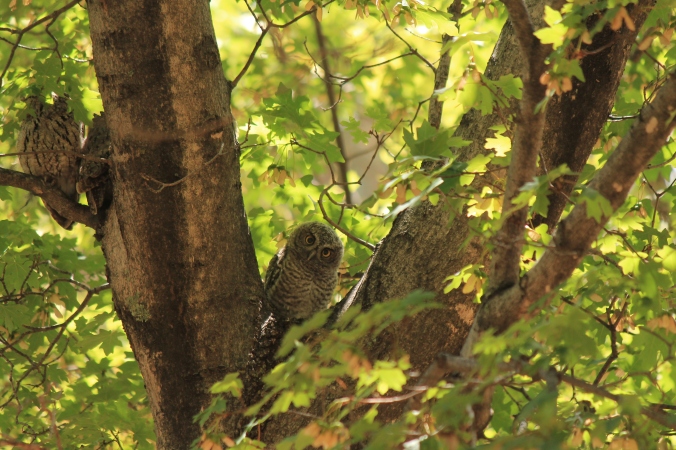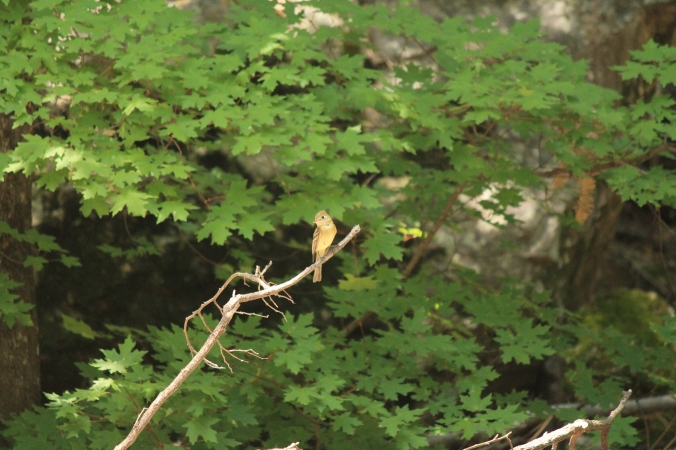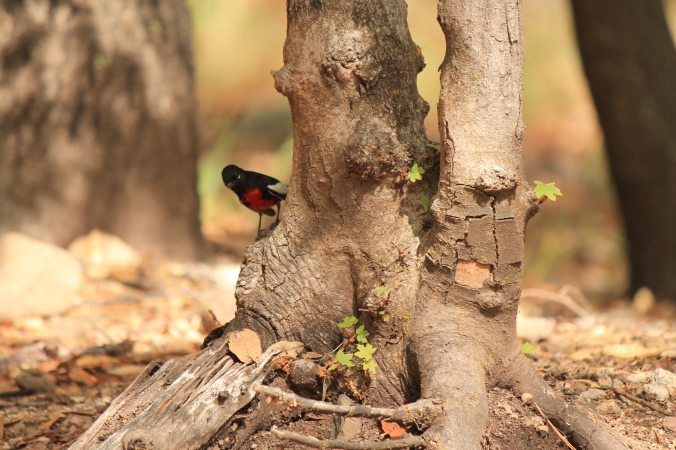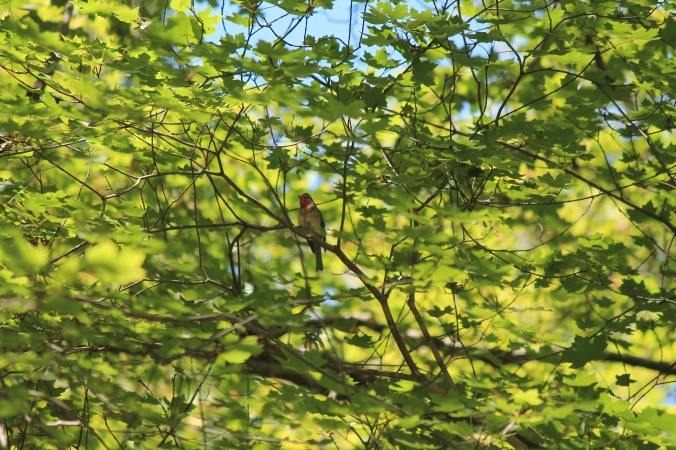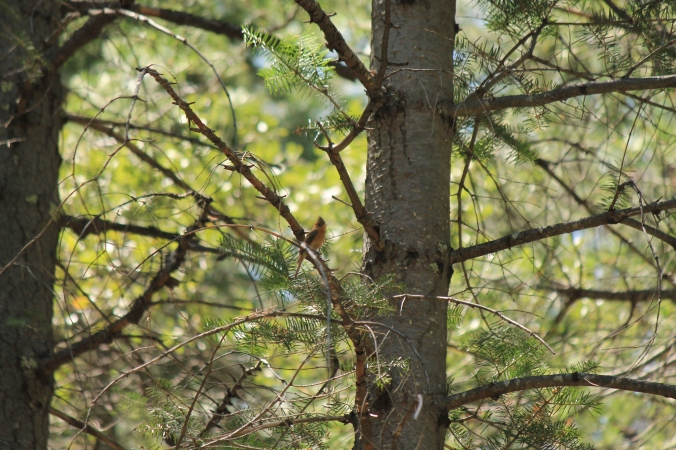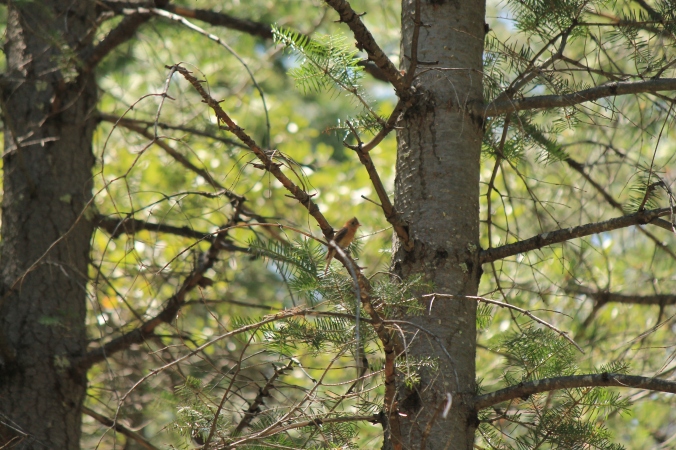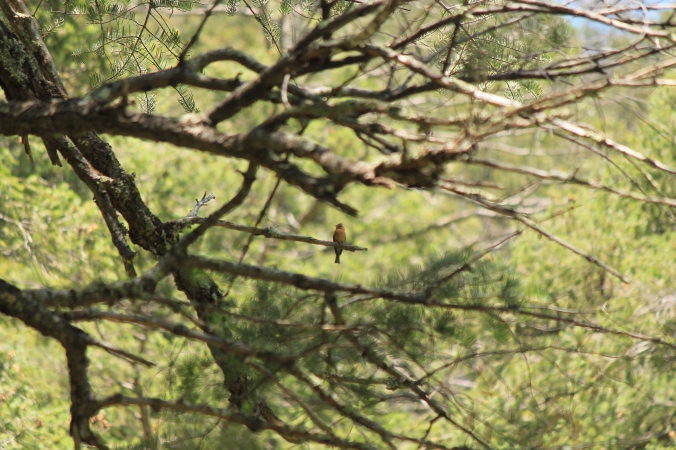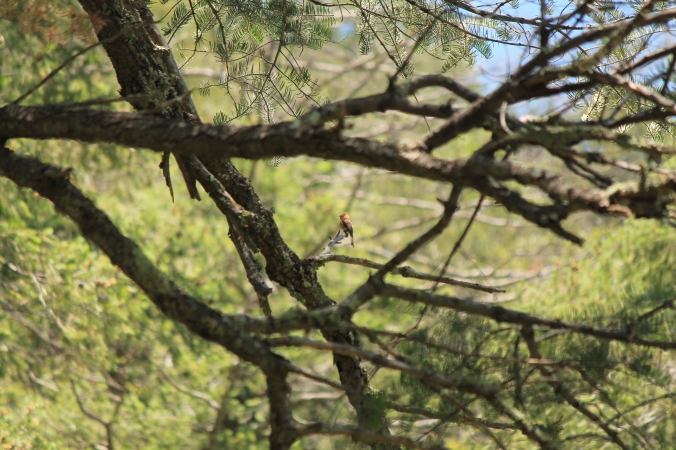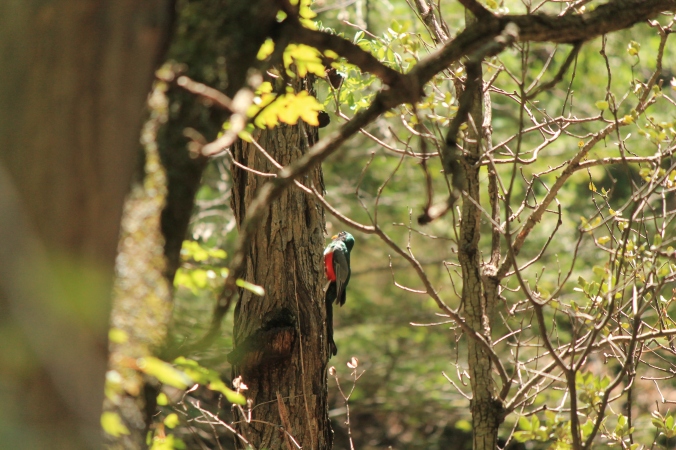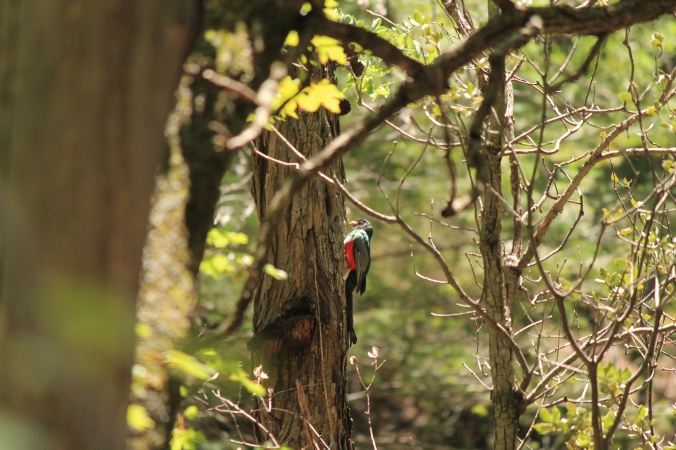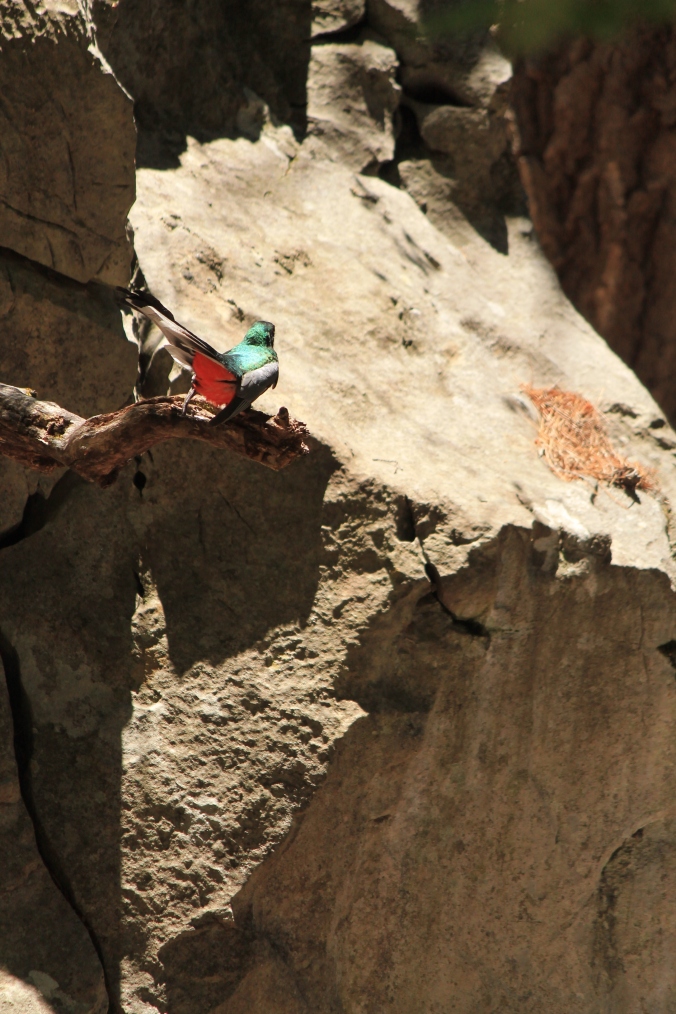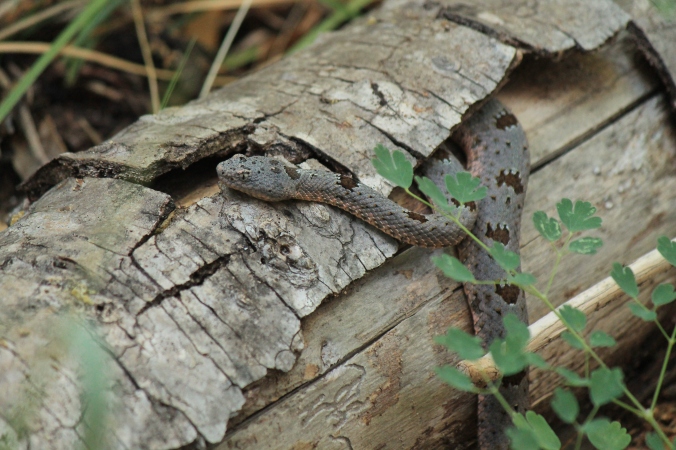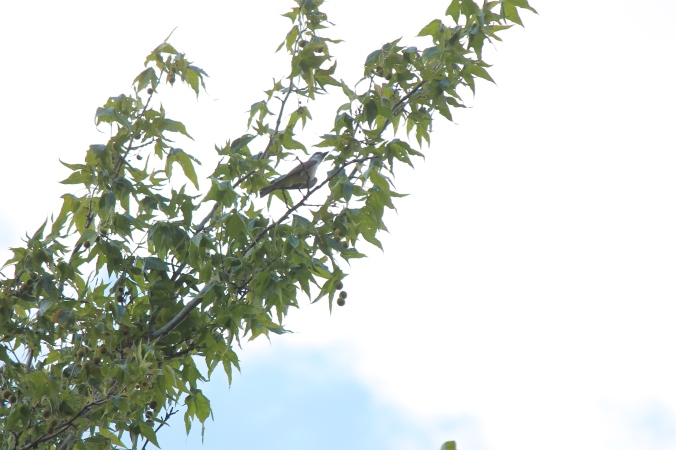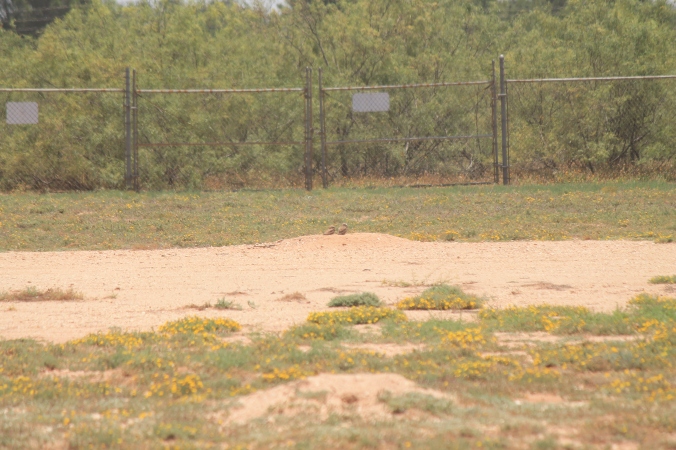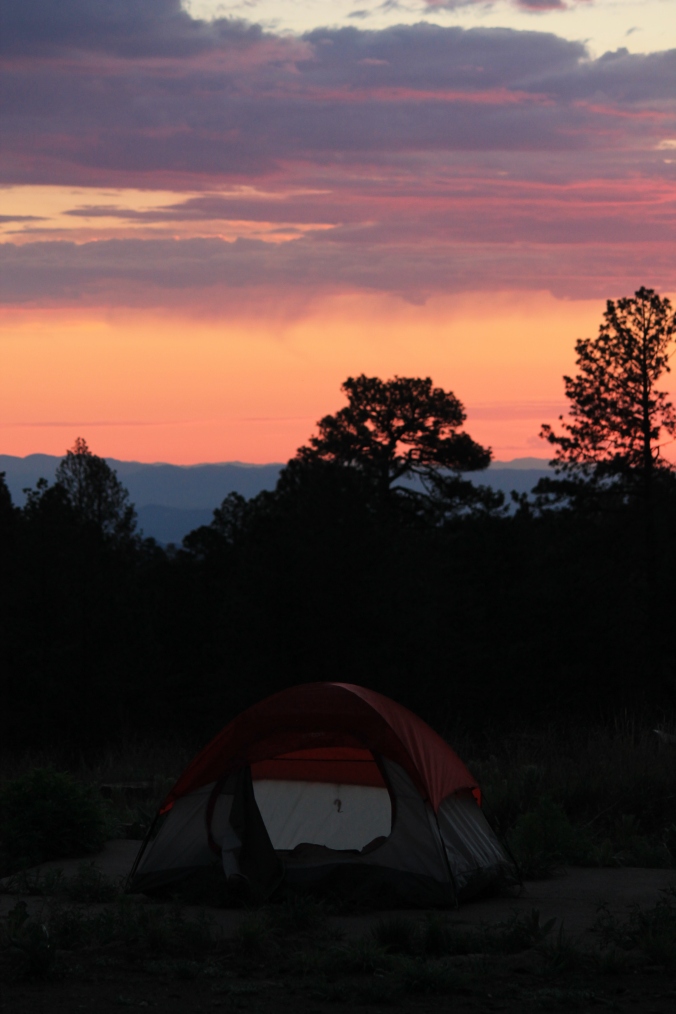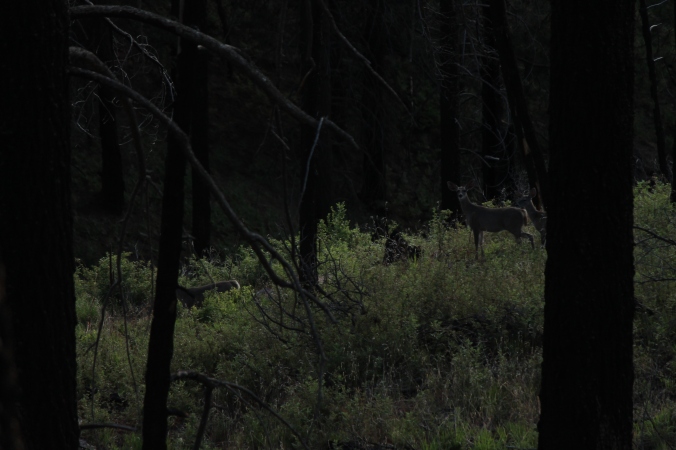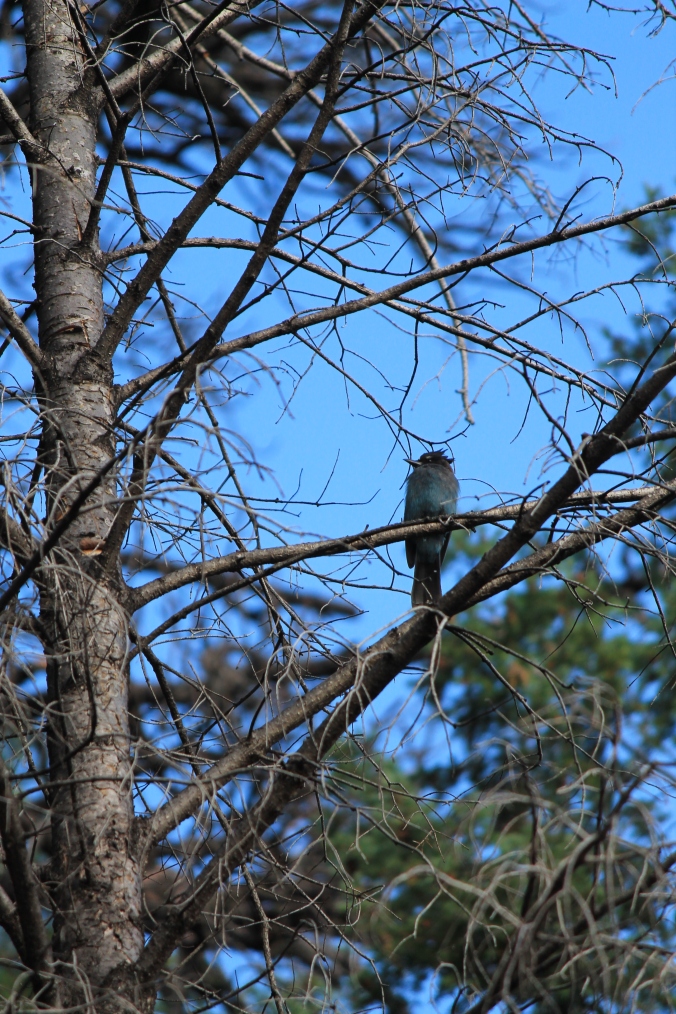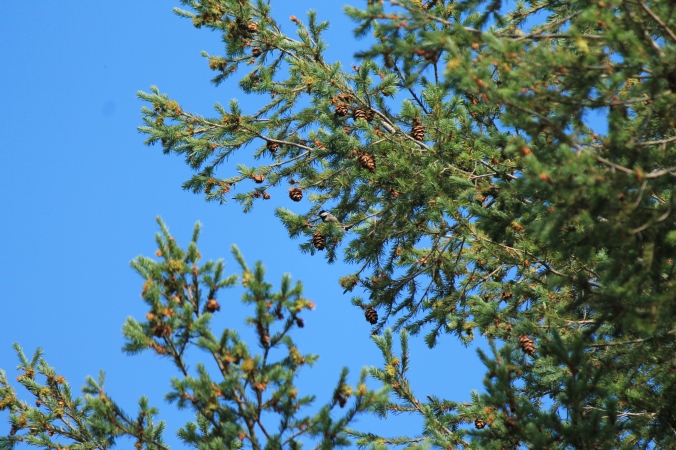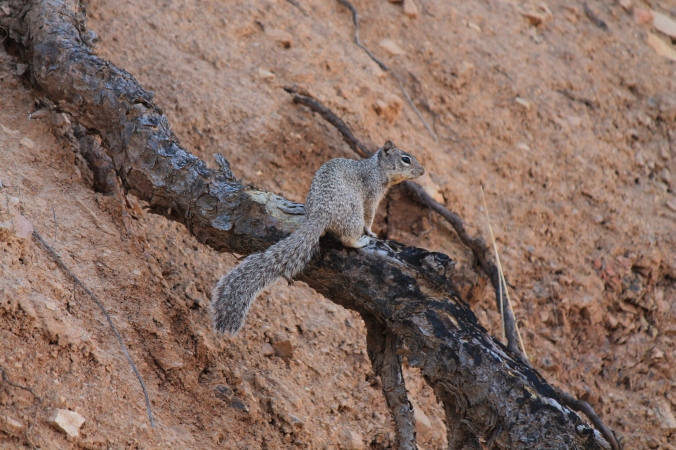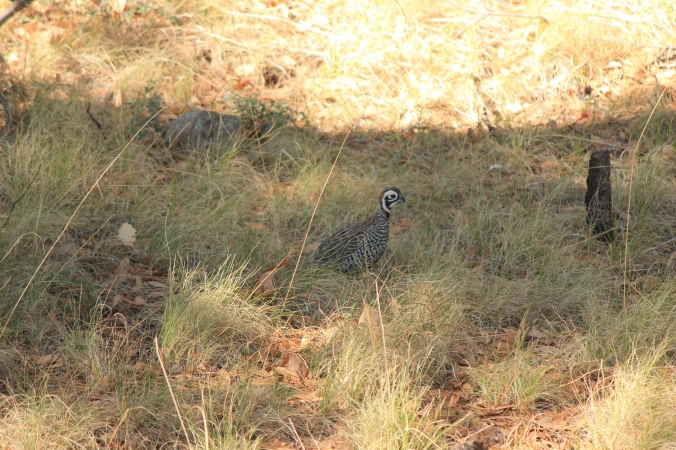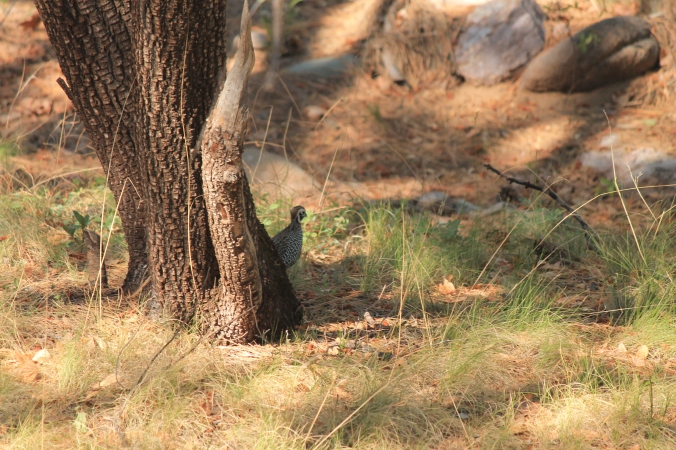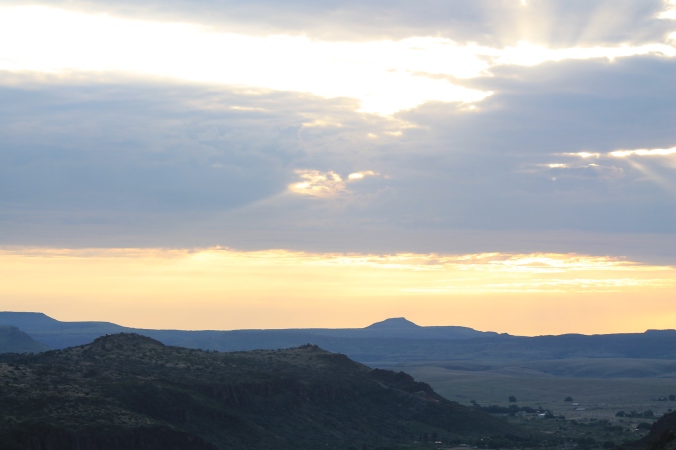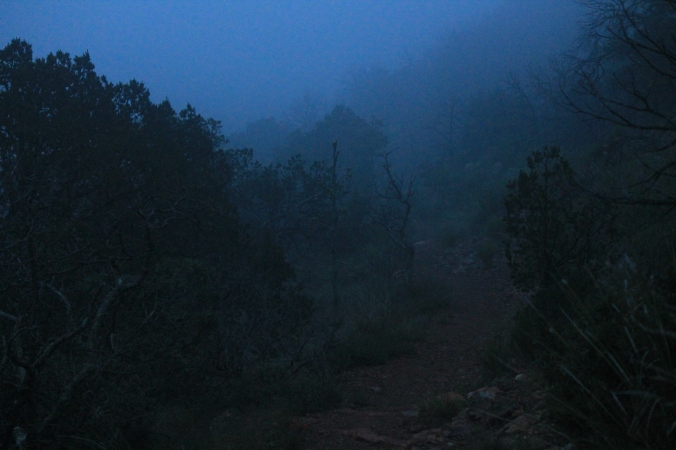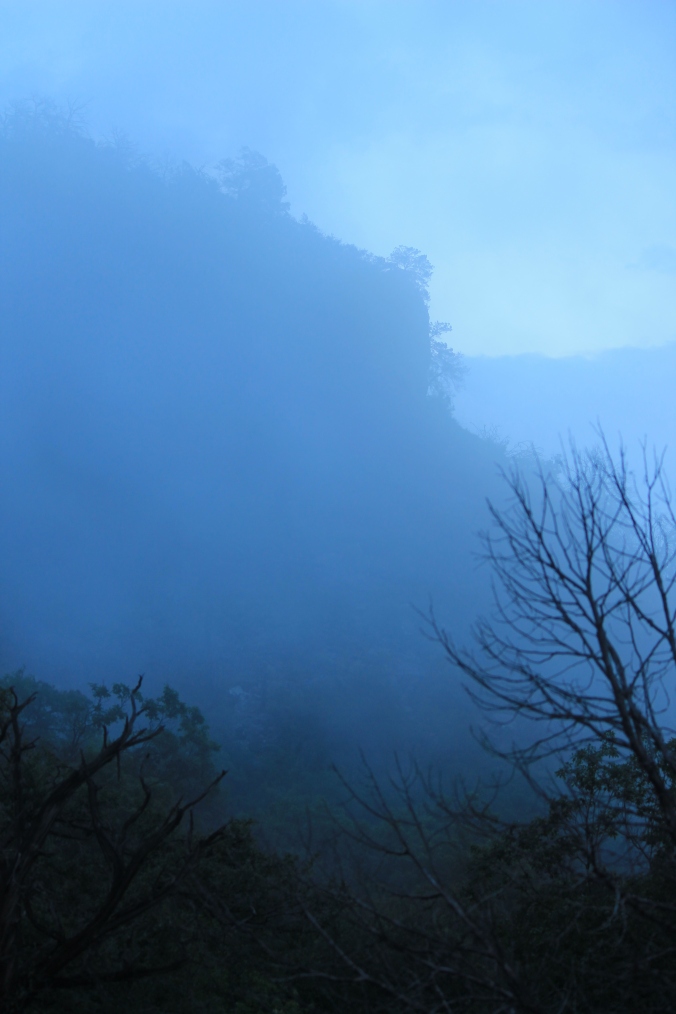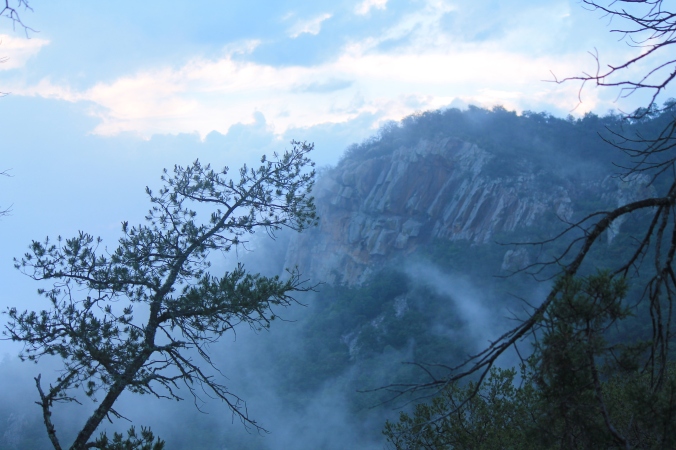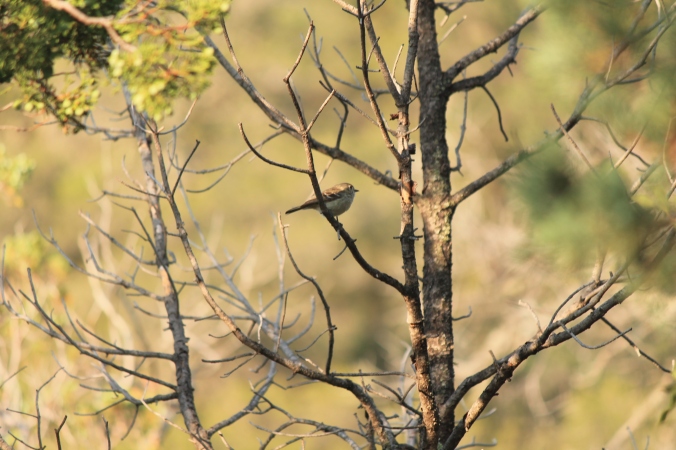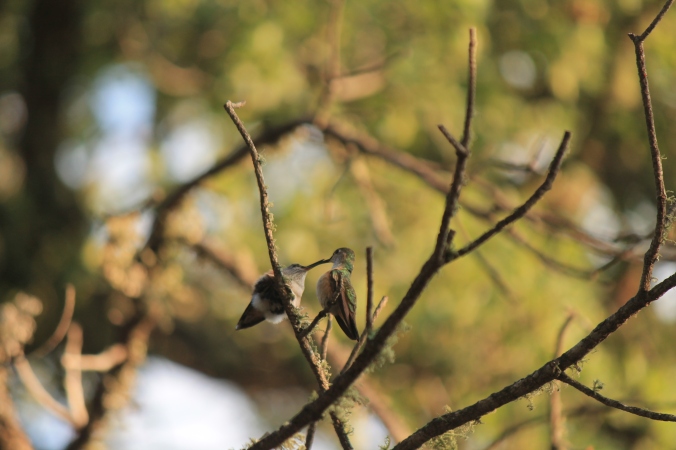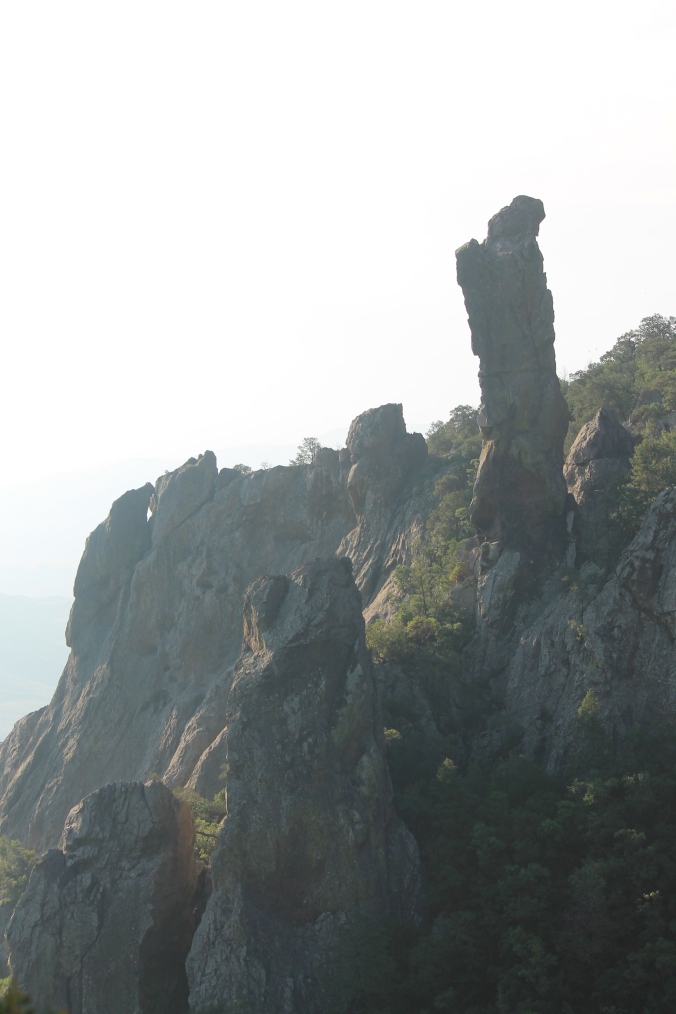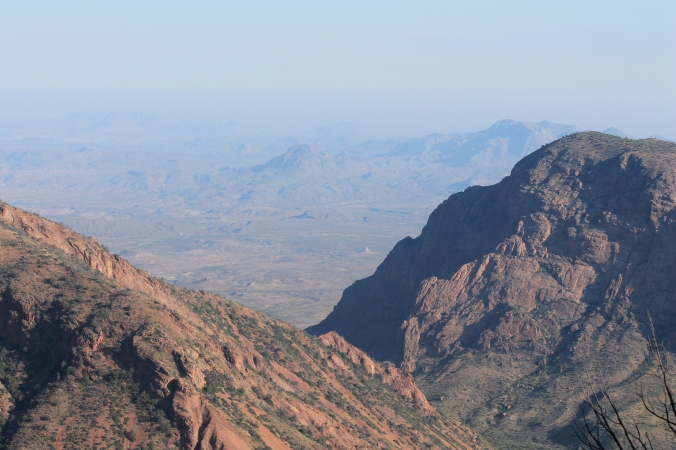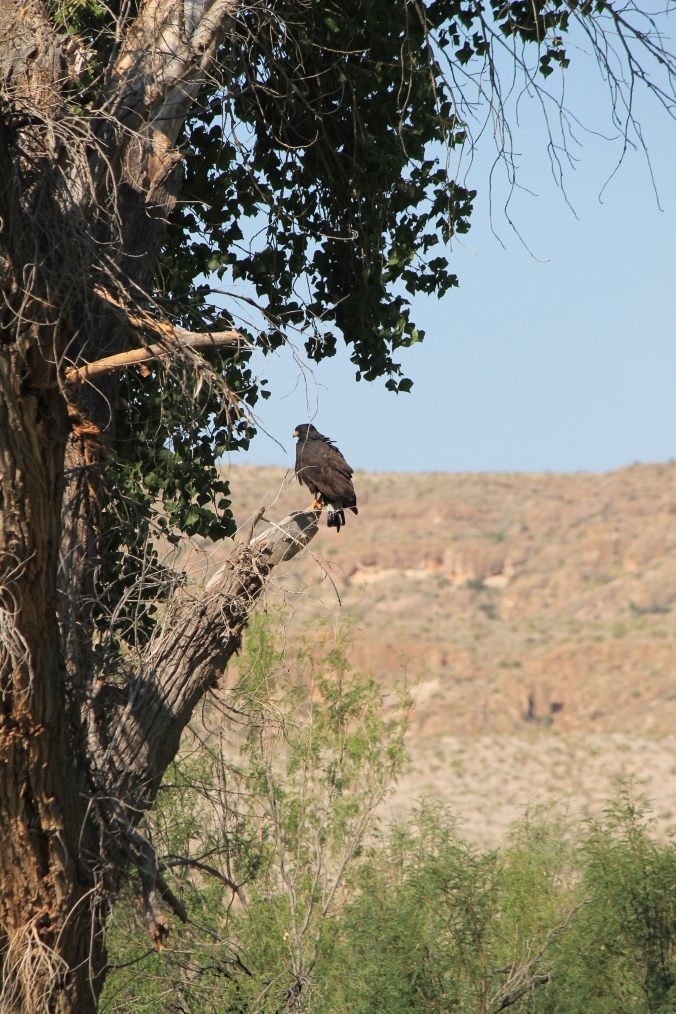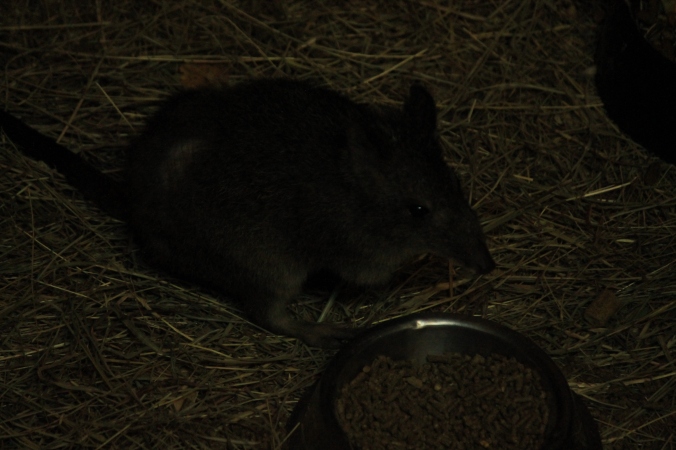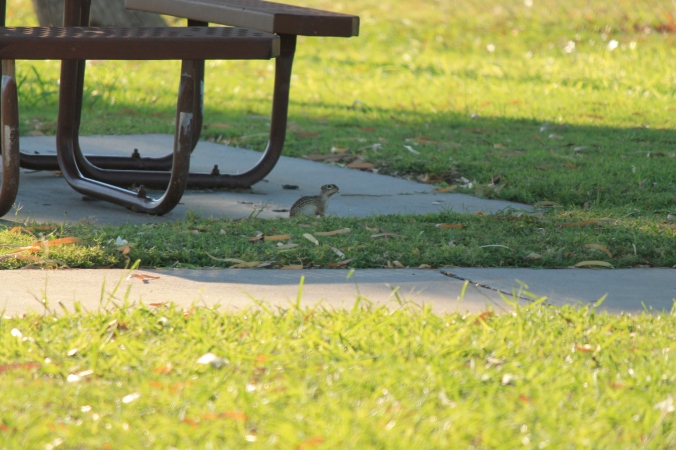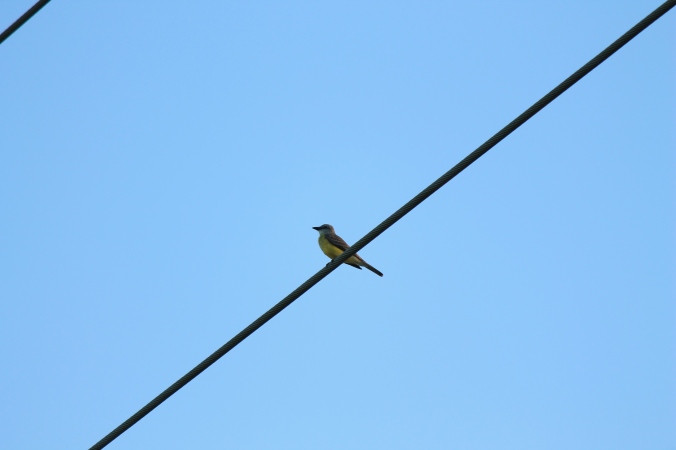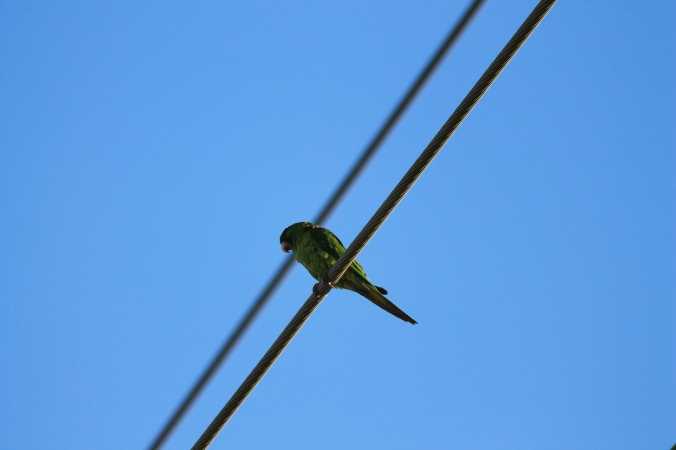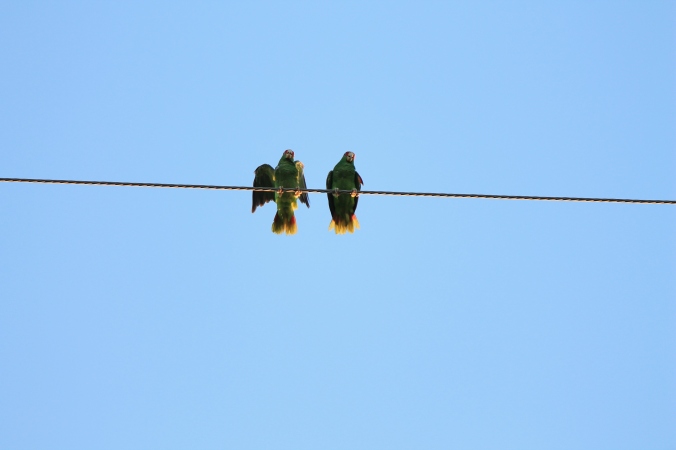Friday, June 26, 2015
The sun rises early in the mountains in Arizona. I saw the sun, but it wasn’t. I was awakened at 4:00 by some odd hooting calls. Turns out, three birds were calling. The Mexican Whip-poor-will, which I had gotten in Big Bend and in the Chiricahuas, so nothing new. But the best way I can think of to be rudely awoken is by the sound of a Spotted Owl, a bird of almost mythic proportions. Also there were Whiskered Screech Owls.
#383 – Spotted Owl (lifer 482)
#384 – Whiskered Screech-Owl
I lay awake listening in my tent for some time before I actually got up. The sun wasn’t quite up yet when I ventured out of my tent. I decided to go out and try and decipher the dawn chorus. I walked around the campsite for about an hour before I returned. And I returned with:
#385 – Arizona Woodpecker
#386 – Western Wood-Pewee
#387 – Cordilleran Flycatcher
#388 – Grace’s Warbler
Not a bad haul. I wanted to head next to Ramsey Canyon, but the preserve doesn’t open until 8. This is, so far, my biggest complaint of the trip. Opening at 8 in Arizona is a rarity – especially for a nature-centered destination. Most places open at 7 or earlier. The sun has been up for 3.5 hours at 8, people are settling down to mid-morning.
Addendum:
In reviewing the species I saw here, I’m now convinced that I saw a Buff-Bellied Flycatcher. It’s the expected Empid up here, with Cordillerans being more scarce. The bird was rather rusty in color with a yellow bill. My initial call on the day was Buff-Bellied, but I second guessed myself.
#389 – Buff-Bellied Flycatcher (lifer #483)
Instead of going straight there, I went to Beatty’s Guest Ranch, home to hummingbirds. I was trying to get the White-Eared Hummingbird, but it was being elusive. Lately, it’s only been seen in the late evening. Oh well. For a place famed for its hummer diversity (12 or 13 species in one day is their record) it was surprisingly lackluster.
On to Ramsey.
There were two very rare reported birds here. I wants them precious.
I got there, the helpful volunteer told me how to find the birds, and I was off. 2 mile hike, I can handle that.
Oh, crap.
I’m a flatlander.
That’s 2 miles, up a mountain. I suck at mountains. At least my ass is getting toned.
On the walk up I collect:
#390 – Dusky-Capped Flycatcher
#391 – Painted Redstart
#392 – Red-Faced Warbler
These are good birds. The Red-Faced is a great bird in fact. But they are incidental.
Bark, bark, bark.
(Or in French)
Barque, barque, barque.
I hear it calling. I know what it is. But dammit, I want to see it. It’s not even the bird I want.
There it is again. Another one. They’re all over. My nemesis bird is calling to me, but I can’t see it.
I keep trekking up the mountain. Two miles up is a rarity. Well, to be specific, two rarities. A pair of Tufted Flycatchers. To the best of my knowledge, I believe these are the 9th and 10th birds ever reported in the US. And boy, do they put on a show. They’re completely caffeinated and won’t sit still. A real delight to see.
#393 – Tufted Flycatcher (Lifer #484)
“Hey, there’s a pair of Elegant Trogons nesting up the path about 50 yards.”
“Can I see them?”
“Sit on that rock and wait.”
Not 30 seconds later, I see the male Elegant Trogon fly out and display. I finally see the bird I’ve chased after 5 times now.
#394 – Elegant Trogon (Lifer #485)
Going back down is far easier than going up. I follow a local birder and his friend who really knows his birds. He spots a small gray rattlesnake – my first ever wild rattler. It’s almost cute. I want to pick it up.
I don’t.
I’m not stupid.
The other goal is the Flame-Colored Tanager. There’s a breeding pair back down on something closer to level ground. I tried to spot it before I headed up, but to no avail. It’d be there when I got back from the Tufted Flycatcher. The local birder told me to listen for a Western Tanager call without and buzz to it. I’ve got a pretty good ear. Hell, I’ve got a damn good ear from being trained as a classical musician. In music, my specialty is being able to listen for odd tone colors. This should be a cinch.
I listen.
There’re lots of Westerns calling. All have a faint buzz to them. The local birder said to listen for a call that is sweeter than the others.
Then I hear a pure phrase. No trill. No warble. No buzz. It calls just once, but I’m sure it’s different. It’s in the right spot. It’s the right tone color.
#395 – Flame-Colored Tanager (Lifer #486)
The reason I can safely say this is a Flame-Colored and not a hybrid, which are seen more often, is that these specific birds are a mated pair, confirmed by many expert birders. Anywhere else but at Ramsey Canyon, had I heard that specific call, I couldn’t have been sure to my ID. Here, I can be.
Three lifers and another three year birds? I think I like Ramsey Canyon. Well except for the four hours of hiking it took to reach the Tufted Flycatcher and to see the Trogons. It was almost like a mini death march.
I forgive it.
From here, I decide to head on to Paton’s place in Patagonia. Nothing I need here, but a nice spot for restful birding. I do manage to pick up a Gambel’s Quail here, which I had missed on all my trips to Arizona so far this year.
#396 – Gambel’s Quail
There are two other birders there. I briefly remember meeting them earlier at Beatty’s. They’re chasers too. Well, at least one of them is. The other is just along for the ride. I tell them about a spot two miles west of town that’s good for Thick-Billed Kingbird. They tell me about a spot that’s just west of Nogales that’s good for Five-Striped Sparrow. We decide to hook up.
First we head to the rest stop just outside of Patagonia. I’d read that it’s almost a certainty for the Thick-Billed Kingbird, and within a few minutes, we had it.
#397 – Thick-Billed Kingbird (lifer #487)
From here, I follow the other guys. They have a book that gives “exact” directions to the sparrows.
Evidently, by just west of Nogales, they meant 40 miles outside of Nogales. And by 40 miles, they mean 40 miles of unpaved road.
This was a nightmare. I should never have tried something without thoroughly researching it. It was 4 hours of bumpy roads and getting lost. I gave up. I felt sick to my stomach from the tossing. The other guys thought I was a quitter. But, night was falling and a thunderstorm was setting in. There were going to set up camp in the middle of nowhere a mile from the Mexican border in mining country. I wanted to be somewhere safe.
Oh, I did at least pick up a Northern Goshawk out there. So that was good.
#398 – Northern Goshawk (lifer #488)
Me following them lost me my chance at the Buff-Collared Nightjar at Madera Canyon.
C’est la via.
Oh, and to top it all off, there was no available campground at Madera. I was pissed.
Time to sleep in the car.
My car needs Fabreeze.

